A Dialogue on the Local and National Targets of Egypt’s 2030 for Water Reuse at the Fourth NLA meeting
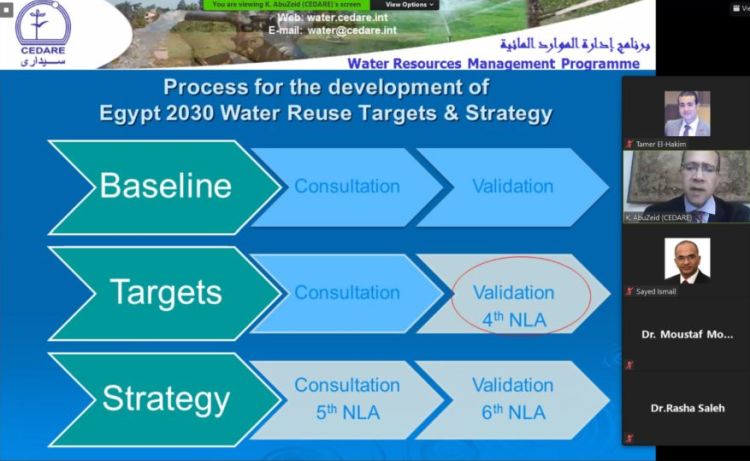
ReWater MENA project, in cooperation with the Centre for Environment and Development for the Arab Region and Europe (CEDARE), organized the Fourth National Learning Alliance (NLA) Virtual Dialogue in Egypt on Water Reuse to validate the national and local targets for water reuse 2030. The NLA meeting included representatives from the Ministry of Housing, Utilities, and Urban Communities (MHUUC) and the Holding Company for Water and Wastewater (HCWW), and other concerned stakeholders through the Video Conference. This Dialogue cormes after the Steering Committee meeting to discuss Egypt's 2030 Targets for Water Reuse, that was held few months ago.
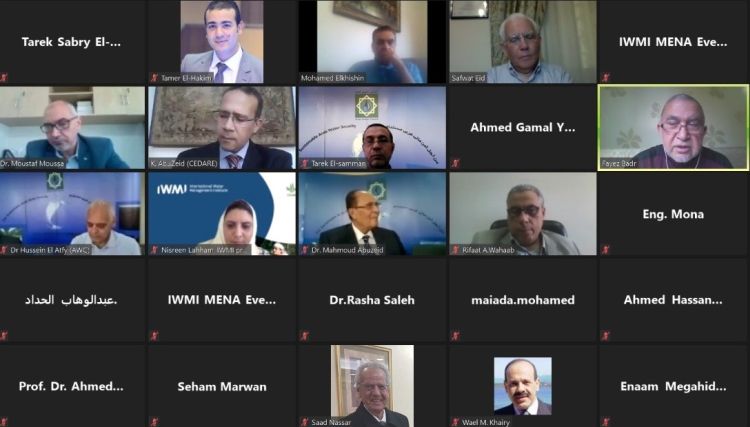
Dr. Khaled AbuZeid, Regional Director of Water Resources at CEDARE, welcomed the participants and opened the dialogue on validation of the water reuse targets. He presented the national targets of water reuse which include increasing access to sanitation for planned reuse, water reuse of wastewater and industrial mixed waste effluents, watercourses for indirect reuse, improve standards of wastewater treatment to fit the purpose, increasing the capacity of recycled water, water reuse to conserve freshwater and replaced by treated wastewater for domestic use, agriculture purpose, and green areas irrigation in urban districts. He also illustrated the local targets for water reuse which include a number of 10 projects that tend to treat and reuse water from agriculture drainage and mixed treated wastewater. He stated that there are other projects that aim for the replacement of shallow groundwater by direct reuse of treated wastewater and projects complement irrigation water by treated wastewater instead of over-exploited groundwater in some regions.
He also noted that all ministerial plans and strategies and the relevant UN targets for sustainable development and Egypt 2030 vision for sustainable development have been considered, as well as available information on existing and planned projects, and it was ensured that there is no conflict between the different proposed targets.
The dialogue aimed to agree on the 2030 targets to address water use in its final form and to develop a preliminary vision of the most important challenges that the Egyptian state could face in achieving each of these targets in preparation for preparing a national strategy for Water Reuse until 2030.
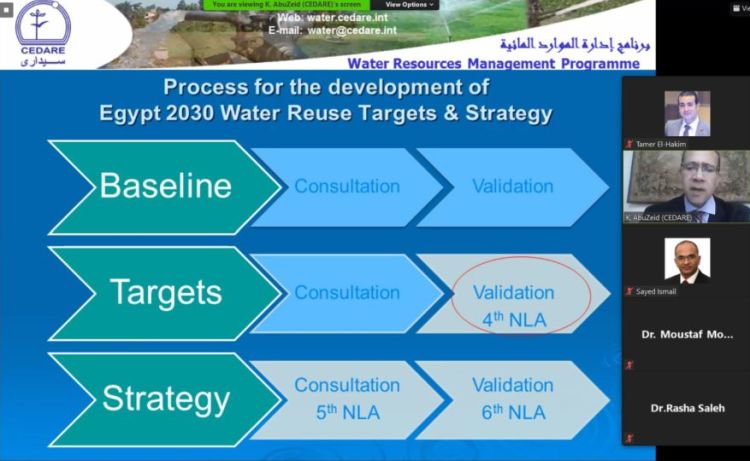
He concluded that the treated sanitation will represent the renewable and increasing water resource in the future for sustainable agricultural development. As the population increases, the resulting drainage increases, which represents a water resource that increases. Hence, it is important to work towards the optimal use of this important water resource
Dr. Amgad El-Mahdi, Head of IWMI MENA Regional Office, emphasized on the importance of safe and sustainable wastewater reuse expansion, by addressing the barriers in this field, and building on the available opportunities. He also confirmed that the Arab Region specifically, Egypt, is the most water-scarce region in the world where the availability of water does not satisfy the demand for water. Therefore, safe reuse of treated wastewater is a must to compensate for the deficit.
Dr. ElMahdi referred to valuing the drop of water in terms of quality, quantity, and efficiency, as well as valuing its return, and the necessity of taking this into consideration in the 2030's targets, to reach a road map for Egypt in safe and sustainable reuse for treated water.
Dr. Saad Nassar, a Former Advisor to the Minister of Agriculture and the Former Governor of Fayoum governorate, indicated in his speech that agriculture is the main consumer of water in Egypt, representing about 80% to 82% of available fresh water, and the water deficit is a consequence of limited water resources that do not match the demand for water in line with, population growth and reclamation of land for agriculture. He added the main goal of the agricultural sector is the sustainable use of available natural resources specifically, water resources. It is a major goal of the strategic goals of sustainable agriculture development 2030.
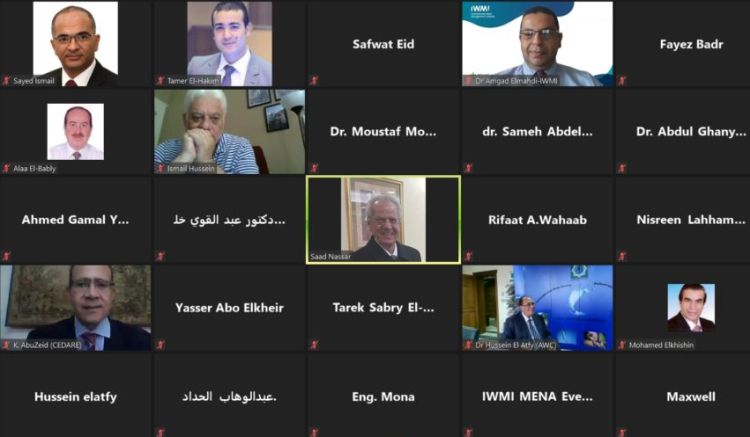
Dr. Nassar mentioned that water reuse after proper treatment is deemed as the main goal of water resources rationalization targets and obtaining the highest return of every drop is for sure, one of the objectives of Ministry of Agriculture. He pointed to the co-operation between the Ministry of Water Resources and Irrigation and the Ministry of Agriculture in adopting new irrigation technologies in Upper Egypt and improved surface irrigation in the delta in addition to, avoid water-consuming crops. Dr. Nassar confirmed the National Learning Alliance Meeting is a step forward in drawing a national road map for wastewater reuse after treatment, to be used for different purposes, which is a national target.
In his opening speech, Dr. Sayed Ismail, Deputy Minister of Housing for Water and Wastewater Infrastructure, indicated that the integration between the state sectors and the integration between the state and the private sector are witnessing great momentum. He praised the efforts made to develop national and local targets for water reuse as one of the most important axes for achieving national security in Egypt. He also referred to the remarkable shift in policies that the ministry adopted from safe disposal of waste discharges to the expansion of the safe reuse of treated wastewater, as a result of the increased demand for water concurrently with, need for economic development.
Dr. Ismail also mentioned that the Ministry of Housing has a strategic vision based on five axes that include:
- expanding the establishment of treatment plants in Upper Egypt with an initial program that includes 60 treatment plants,
- developing, improving and raising the efficiency of existing stations in Upper Egypt, and
- expanding treatment in the rest of the governorates and new cities with a program that includes 150 treatment plants at a cost. 30 billion pounds,
- the expansion of the national program for sanitation in villages through the program of a decent life, and
- the expansion of wastewater treatment plants mixed with agricultural drainage.
Dr. AbuZeid presented the details of the proposed national and local targets. He also showed the current and future water balance after achieving the proposed 2030 targets for water reuse. He indicated that the volume of wastewater reuse, agricultural and industrial, could reach 23 billion cubic meters annually in 2030.
The National and Local targets were presented and the participants voted, based on their perception, on the expected achievement of each proposed targets, and the expected challenges that will face the achievement of each of these targets. The challenges include:
- Competition with other national priorities,
- Financial and time limitations,
- Enabling environment limitations (institutional and regulatory),
- Lack of social acceptance,
- Competition between New Agricultural Development Projects over available wastewater,
- Competition between New Agricultural Projects and Old Groundwater Depleted Agriculture Establishments.
- Competition between Agriculture & Urban Landscaping over available wastewater,
- Physical & financial losses due to prioritizing Indirect Reuse over Direct Reuse of wastewater,
- Consistent Water Quality for reuse
- Compliance with Egypt 501/2015 Reuse Code so that agriculture products meet quality requirements.
The dialogue was very vivid and came up with several recommendations. The most important of which was the need to develop policies that reduce the burden on the state budget in terms of treatment and reuse of drainage, the need to motivate farmers to undertake the reuse of wastewater, and the importance of directing treated drainage to the existing lands in the West Delta, west of the Cairo-Alexandria Desert Road, which are suffering from depleting groundwater because the existing investments in export and food crops are threatened. The participants also praised the mega projects to deal with mixed agricultural drainage and stressed the importance of reviewing the design capacity in light of irrigation modernization projects and the accompanying decrease in the quantities of agricultural drainage in the future, and taking into account the expected expansion of housing units in the area and the resulting sanitation that can be used. They indicated the importance of comparing the cost of transportation and treatment for direct reuse with indirect use, which may require transportation over longer distances. Participants recommended that the future orientation be more for direct use of treated wastewater than indirect use.
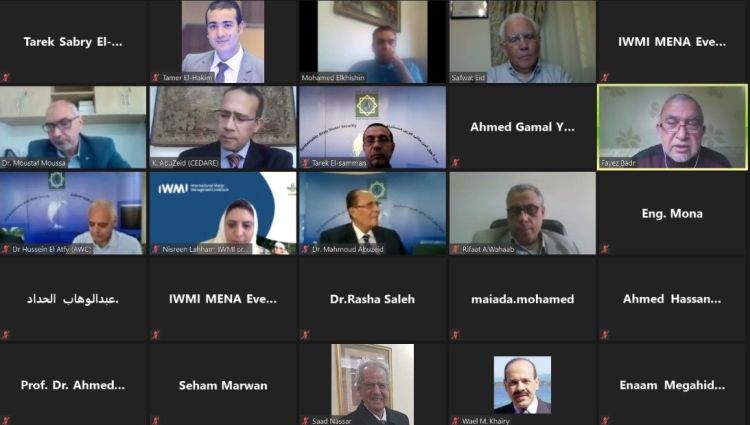
The experts emphasized on the importance of reviewing the quality of green spaces in the new cities and adhering to the guidelines for the use of desert plants in “desert landscaping”. They emphasized on the possibility of directing treated drainage for direct or indirect use of some areas of the 1.5 million acres project, whose main dependence was on water. The experts called for the importance of sustaining the operating efficiency of sewage treatment projects and applying the foundations of governance and rational management to the safe reuse treatment projects.
It is worth noting that ReWater MENA that aims for sustainable and safe water reuse in the Middle East and North Africa, is a regional project funded by the Swedish International Development Agency (SIDA) and implemented by the International Water Management Institute (IWMI) in three countries; Egypt, Lebanon and Jordan in cooperation with local, regional and international partners.
This article was originally published on www.gomhuriaonline.com
